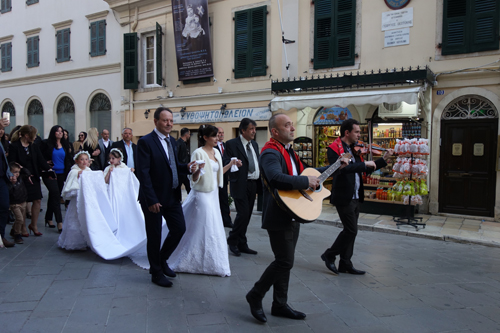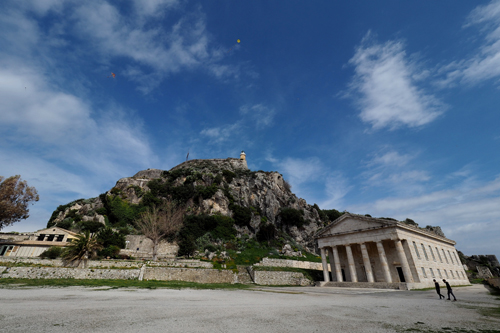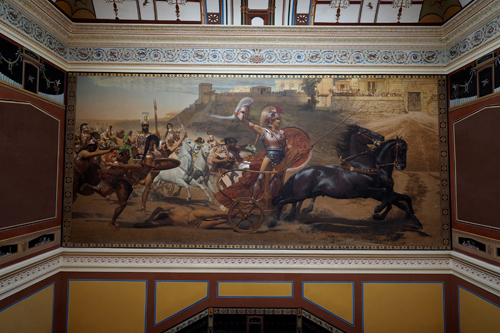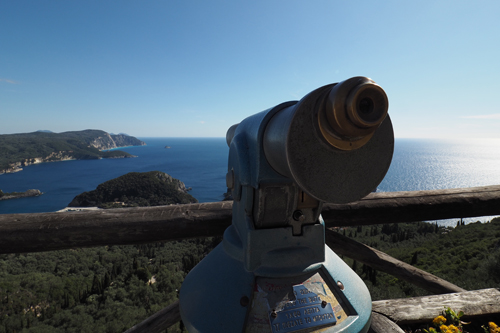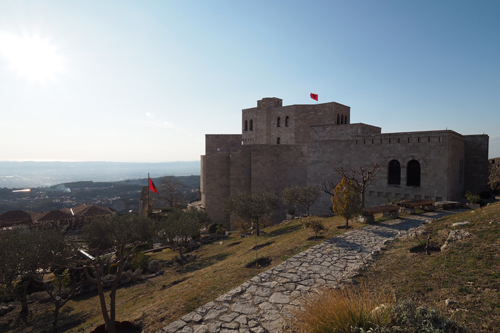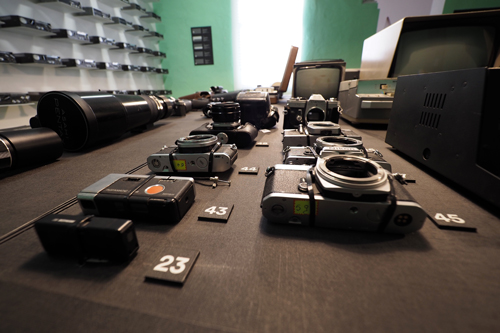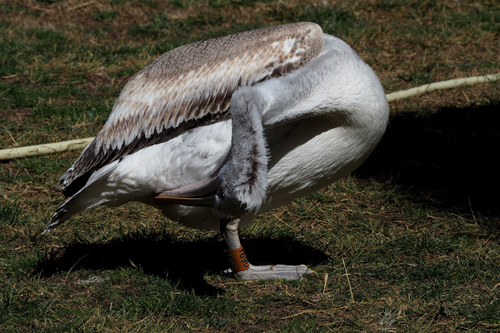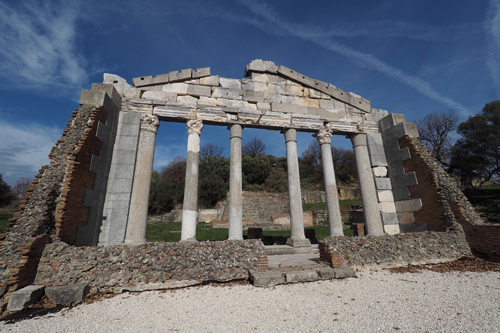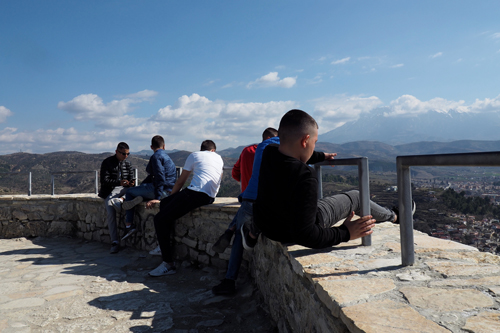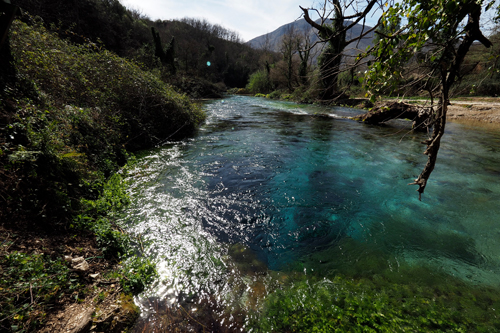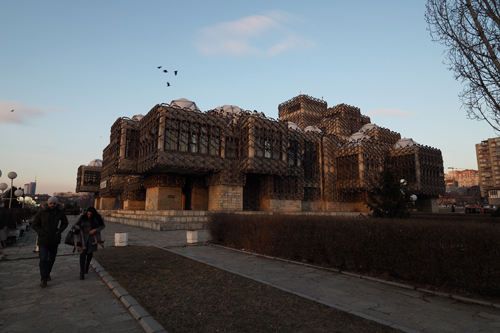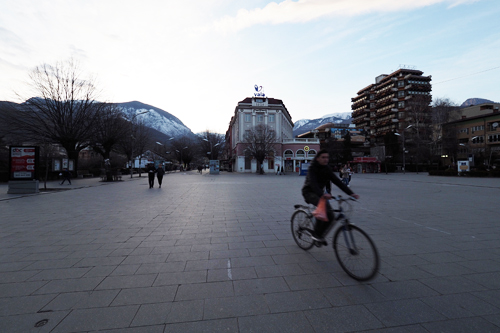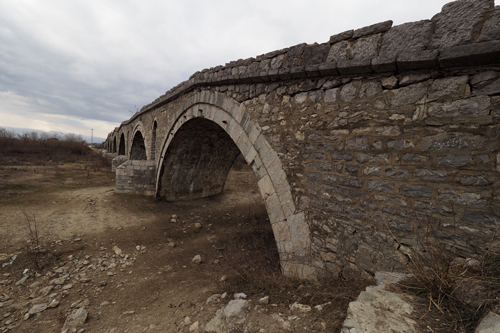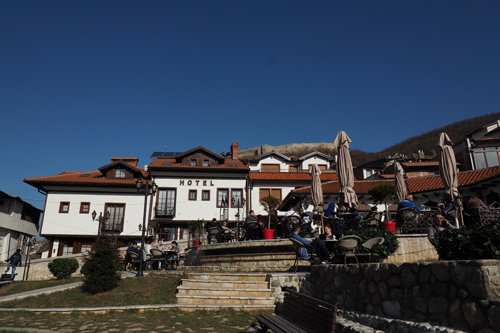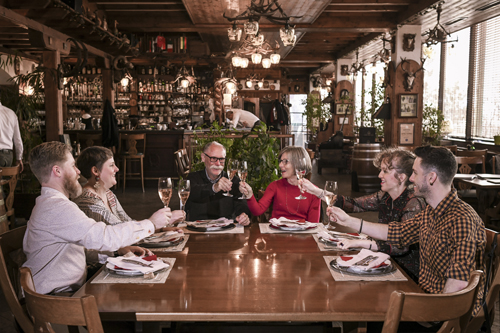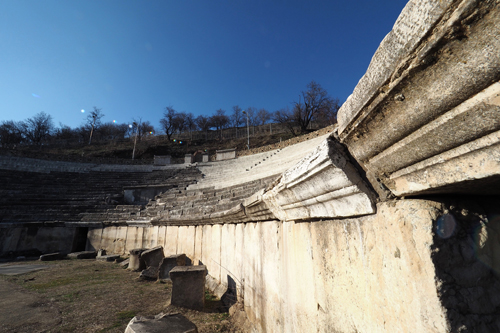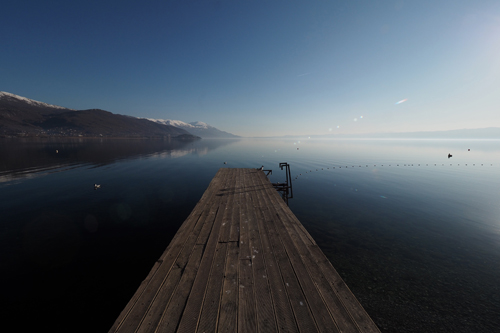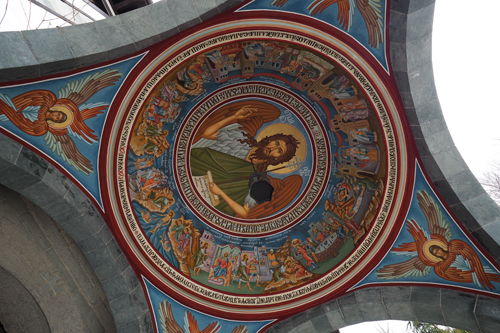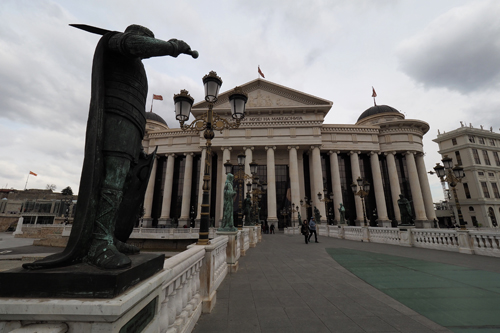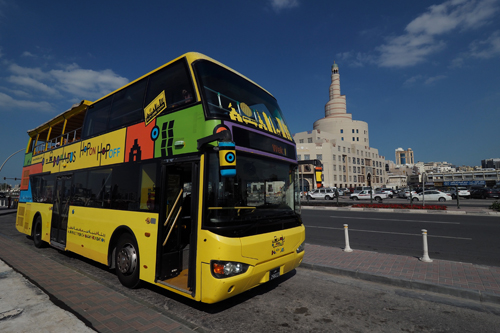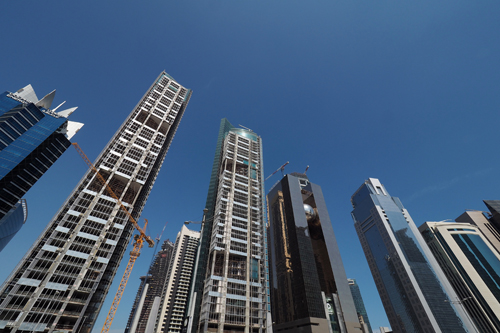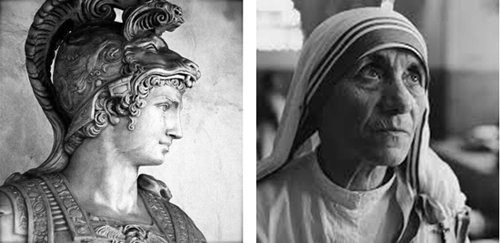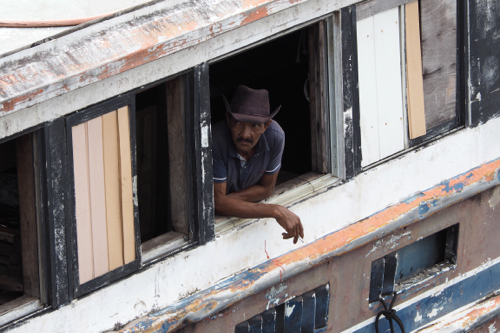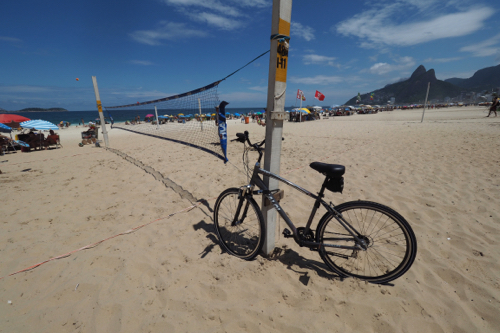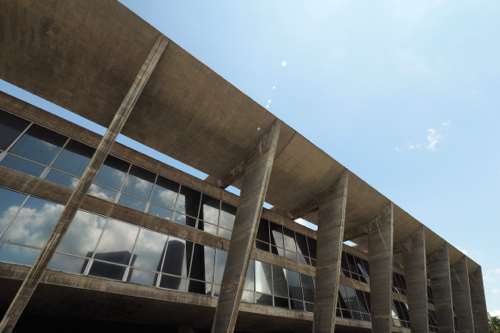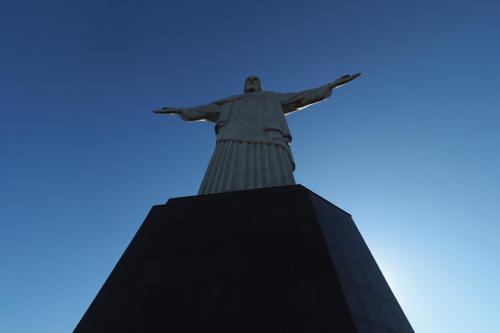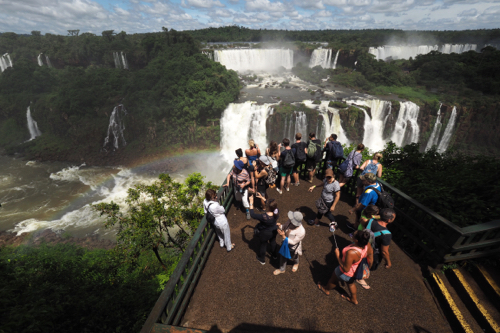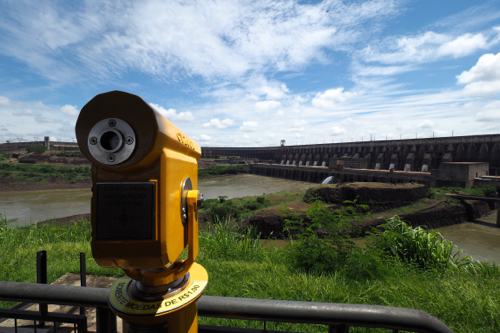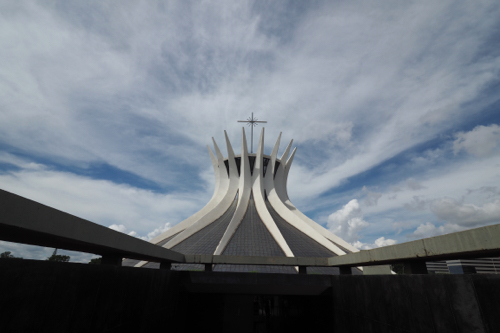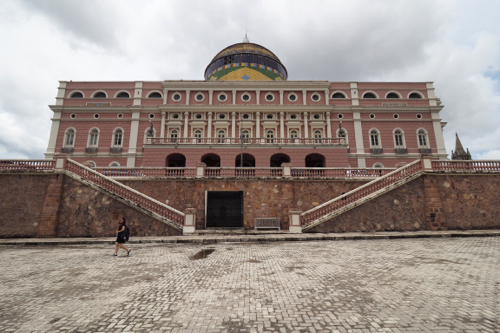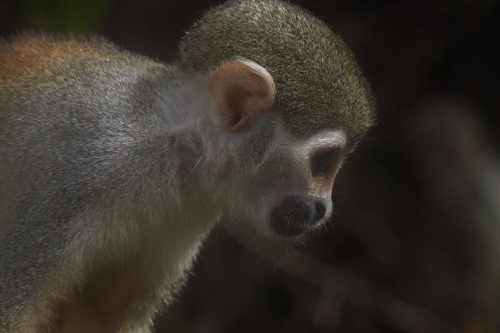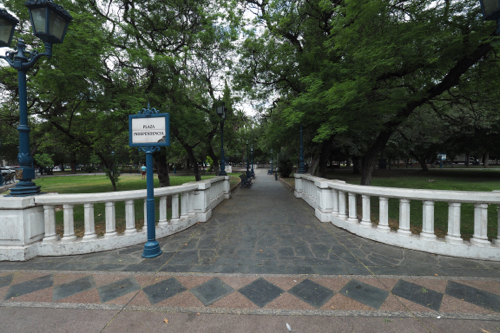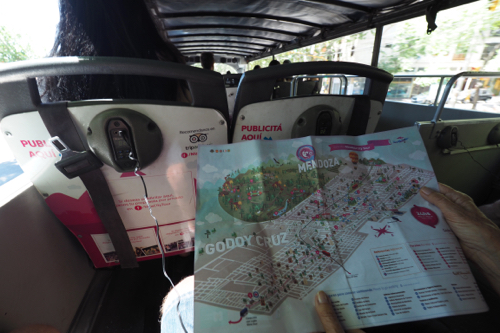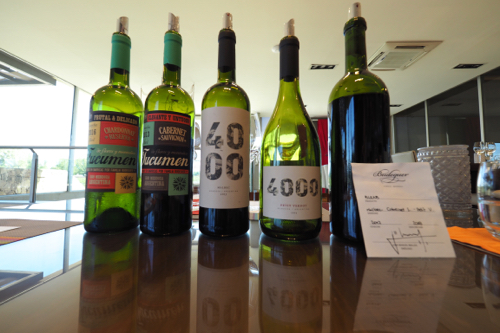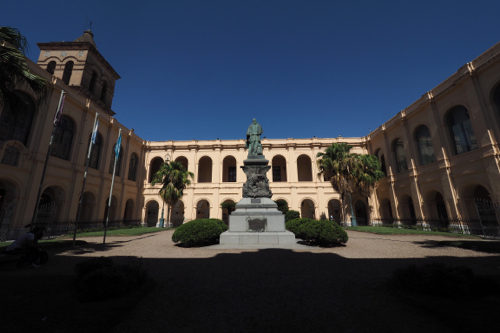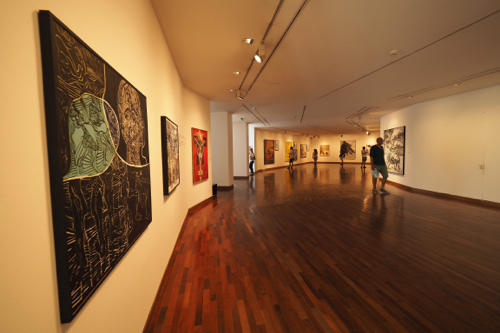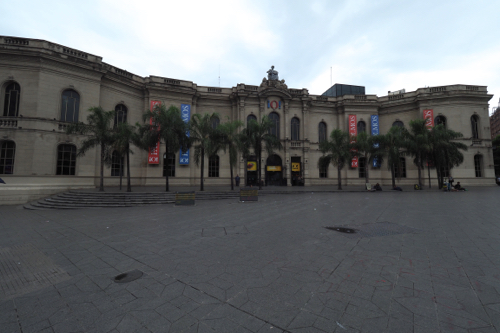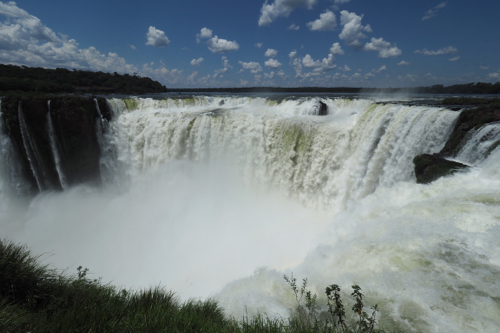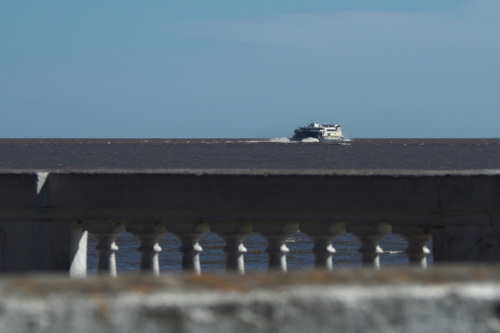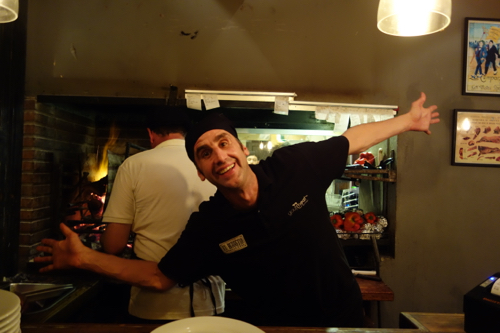March 9, 2019. Saranda, Albania to Corfu, Greece.
The ferry to Corfu wasn’t until 1pm, so we spent some time walking down into the town centre of Saranda again.
The weather was certainly improving, with blue skies and sun that had some warmth in it.
The cafe on the front was full, especially all the seats facing the water.
We had a coffee then returned to the hotel.
The hotel owner kindly drove us to the port.
Not wanting his generosity to go unnoticed, he urged us to put a good word in on Google.
Once aboard the Kristi, we left the Balkans and were now headed for the Ionian Islands.
Part four of our adventure.
The route took us down the straight between Albania and Corfu and past Butrint, where we had been the day before.
We caught a taxi from the port into Old Corfu Town, there we were to meet the host of our AirBnB.
We waited and waited but she never turned up.
Eventually we came across a guy who seemed to be looking for people. We put two and two together and realised that his guests had probably gone off with our host.
Sure enough, after a phone call, our host returned to the meeting place and took us to our accommodation.
Then there was a swap of guests.
I get the feeling that the other couple might have ended up winners.
‘Cute house in old Corfu Town’ was the way our accommodation was described.
Sometimes marketing people need to answer to their over-sell.
‘Small and cramped’ would be more of an accurate description.
Admittedly it was a short walk to the centre of the old city, but still an over-sell.
‘Cute’ is a way of saying it has lots of issues, therefore forgive it’s short comings.
This was an apartment, booked through bookings.com and should have had far more amenities than were provided.
It also had some idiosyncrasies.
The water from the washing machine had to be drained into the toilet bowl.
Too bad if you needed a poo while it was draining.
You had to turn the water heater off in between using it, or else it would overheat.
The smoke detector ‘chirped’ so it had been turned off – maybe a new battery was in order.
The key had great difficulty actually opening the front door and had to be replaced.
In the evening we went for a wander around the old town and discovered ‘Diver’ a Beer Restaurant that has outlets in both Athens and Corfu.
Much to Thea’s delight they also have wine as well.
They had five beers on tap, which is rare, and 50 beers in bottles, which in this part of the world is unheard of.
Craft beer is certainly catching on – even in Greece.
March 10, 2019. Corfu, Greece.
As it turns out we were in Corfu during a carnival long weekend.
The origins of the word carnival come from the Latin: ‘carn’, meaning flesh and ‘levare’ to put away. So in essence carnival was a food festival, as it was the last time to eat meat before the 40 days of lent.
The reason for the celebration and public holiday was for Clean Monday.
Also known as Pure Monday, Ash Monday, Monday of lent or Green Monday. This is the first day of Great Lent, a popular festival with the Eastern Catholic churches.
On the Sunday, as part of the carnival, there were processions through the main street in the old city. Apart from the people in the parade, many locals dressed up.
There were children dressed as police, super heroes and in army fatigues.
An angel and devil duo was very popular with the teenage girls while ‘Anonymous’ was the favourite with the boys.
We spent most of the day just wandering around enjoying the festive atmosphere.
In the evening we returned to the main city centre and dined at one of the local restaurants.
It was like being back in Albania – the place was empty.
As the waiter explained, it had been a big day for most, and the majority had gone home.
By 9 pm a few people started to drift back into town.
March 11, 2019. Corfu, Greece.
The earliest mention of Corfu relates to the Mycenaean Greek word, meaning Man from Kerkra, in 1,300 BC. Some scholars believe that it was mentioned in Homer’s Odyssey.
Old Corfu Town is a classic Venetian city, with a old town and stylish colonnade along the front that overlooks the green expanse of Spianada Square.
The colonnades are full of cafes and restaurants and everything faces the water.
Spianada Square is the largest town square in Greece and right in the middle is a cricket pitch. Corfu is the only place in Greece where cricket is played. It was introduced to the island during the British Protectorate that followed the Treaty of Paris in 1815. This was a time of prosperity with new roads, improved water supply and the construction of the first Greek university in the Ionian Islands.
During this period the Greek language became official in Corfu.
We were not surprised to find this relic of British colonialism, as we were pre warned by Alex, the Zimbabwean/Dutchman, we met at the Blue Eye in Albania.
Kite flying seemed to be a part of Clean Monday.
After a coffee we returned to the town centre and there, on the cricket pitch, families were trying to get their kites airborne.
There were a few ‘professionals’ and they had no trouble. Their kites seemed to be soaring hundreds of metres into the blue Corfu sky.
Custom has it that the higher the kite flies the closer you get to God. The Greek mathematician and engineer, Archytas (440-360 BC) first started to fly kites around 400 BC. However the ancient Chinese were flying kites well before that in 1,000 BC.
Their desire was similar, in that they would write messages on their kites, in order to communicate with the gods.
We walked the few hundred metres, past the park, to the the Old Fort. This is mainly Venetian in design and built between 1386 and 1797.
Again there were kite flyers in the central courtyard.
After wandering around the township for some time we eventually found the New Fortress. Only to discover that it was permanently shut due to safety reasons.
Compared to the previous day Corfu was dead. Admittedly it was a public holiday but the streets were empty and most businesses, except in the centre, were shut.
Everywhere we go we hear songs that are sung, either by Justin Bieber, or someone who sounds just like him, or his female counterpart, Justine Bieber.
It’s all Bieberish to me.
March 12, 2019. Corfu, Greece.
Having spent three days wandering around Old Corfu Town we hired a car and headed out to explore the island.
We needed something small, considering the narrowness of the streets and parking spots.
The VW Polo suited the task.
We had the car for two days so planned to head south on day one and north on the second day.
Our first stop was the Achillion Pallace and Museum, built in 1890 for Elisabeth, Empress of Austria and Hungary. It was designed by the Italian architect, Raffaele Caritto.
While we were inside, it started to rain, which stopped us exploring some of the gardens.
Elisabeth purchased all the land between the house and the sea. This 80 hectare area contained gardens plus walking and riding tracks.
She was a great lover of exercise and would walk and ride around her beloved Achillion.
The name ‘Achillion’ came from her love of Greek mythology, especially Achilles, for whom she had a deep affection.
The house, now museum, is full of Greek statues.
After her assassination in Geneva in 1898, by the anarchist Luigi Lucien, the house remained closed for nine years.
Since that time it has been owned by Kaiser Wilhelm II of Germany, been a hospital for French and Serbian troops and then taken over by the Greek State.
During the Second World War it was used by the occupying Italian and German forces and then again it reverted back to state control.
For a period it was a casino, the first in Greece and was featured in the 1981 James Bond Movie, For Your Eyes Only. Then in 1994 it was restored and used for the European Union Summit in Corfu.
From Achillion we then drove to Lake Korission, a coastal lagoon of 427 hectares that drains into the Ionian Sea
Continuing our drive around the south we ascended up route 25, where we got some great views of Corfu. We found that from that aspect we could see another angle of Achillion.
We then visited Mon Repos, the house where Prince Philip, Duke of Edinburgh was born in 1921.
The house was originally built for Frederick Adam, the British Lord High Commissioner of the United States of the Ionian Islands in 1828. After the union with Greece in 1864 the villa was granted to King George I of the Hellenes.
He was the grandfather of ‘Phil the Greek’
This was yet another attraction that wasn’t open. It would have been interesting to see inside.
The area where the house is located overlooks the coast and is also a public park.
Many runners and walkers enjoy the solitude and verdant green forrest that surrounds Mon Repos.
We were the only tourists.
March 13, 2019. Corfu, Greece.
It was a beautiful blue sky day for our drive around the north of Corfu.
This part of the island seems to be much more affluent than the south.
However everything was still shut, the ATMs, currency exchanges and even the traffic lights don’t start working again until spring.
In the south many places were in disrepair, while in the north construction and renovation was everywhere.
The north even appears to have better landscape.
The rolling green hills, dramatic rock escarpments and small villages tucked into the hillsides, all added to a great drive.
At one point we drove along the ridge road between the villages of Troumpetas and Agia Anna (Saint Anna). At times we could see both sides of the island.
Near the village of Almyros, in the north east, we got a great view over the Ionian Sea to Butrint and Saranda in Albania.
We continued driving in an anti-clockwise direction and came across Angelokastra Castle. This Byzantine fortress sits at 305 metres on the highest point in Corfu. Built in the 13th century it never succumbed to attack.
It was a great day of driving. Perfect weather, good roads and courteous drivers.
We returned back to Old Corfu town and parked in the city car park, which was adjacent to the cricket ground.
It was a good spot to park, with decent size car spaces, easy access and only €3 per day.
We had picked up the Polo from the airport and were going to drop it off the next day. This was to catch our flight to Cyprus.
